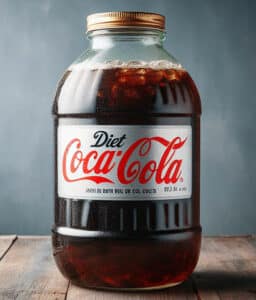Healthy food pyramid
Most of us think of the food pyramid as a simple and clear guide to healthy eating. However, everything is not so straightforward, since there are several food pyramids.
In fact, the human body in Africa is the same as in Europe, America, or India, so it would be strange to believe that the same food group affects people living in America differently than those living in Europe or Africa.
Moreover, almost all races and nationalities are widely represented in the USA.
The origin of the food pyramid
The first visual representation of dietary recommendations in the form of a pyramid originated in Sweden in the 1970s, and its purpose was not to visualize recommendations for healthy eating in a more understandable form for the "ordinary" person.
After countless street protests caused by high food prices, the Swedish government decided to create a special committee to assess the possibility of creating a balanced diet at a reasonable price.
In 1972, the Swedish National Board of Health and Welfare issued recommendations on "basic" and "supplementary" foods:
- Basic food products – products that were considered essential for human well-being;
- Supplemental nutrition products - products that provide the human body with vitamins and minerals that are not present in basic foods, but which are necessary for the body.
In 1974, the first visual food pyramid was presented to the public with the following message: "Good, healthy food for a reasonable price."
This pyramid consisted of 3 parts:
- The base of the pyramid included basic foods that were considered essential for a person's well-being - cereals, dairy products, pasta and potatoes;
- The center and the top of the pyramid represented additional food products - vegetables, fruits, berries, nuts...
- At the top of the pyramid – were meat, fish, and eggs.
It is believed that the author of the idea of visual representation was Anna Britt Agnsäter and it was so successful that it spread relatively quickly in other countries, including Japan, Denmark, Sri Lanka, the USA...
The development of the concept of the food pyramid
It is not clear exactly when the first nutritional guide appeared.
Guidelines, pyramids, wheels - whatever you call them - were introduced for one purpose: to give consumers recommendations on how to create balanced and nutrient-rich meals.
But while almost all of us have heard of the food pyramid, few people know the extensive history of nutrition guides.
1916 – 1930 years
During this time, the USDA created 2 guides:
- "Food for Young Children,” created by nutritionist Caroline Hunt in 1916, it became a widely recognized nutrition education tool that helped translate the recommendations of nutritionists into “plain language.”
Caroline Hunt was the first to divide products into categories - Milk and Meat, Cereals, Vegetables and Fruits, Fats and Fatty foods, Sugars and Sugary foods (desserts).
- "How to Select Foods” was created in 1917. It was an adult nutrition guide using the same five food groups that Caroline Hunt had identified.
These guidelines remained in effect until the 1920s. Then in 1933, in response to the Great Depression, the USDA developed dietary recommendations for four different cost levels.
In 1941, the first recommended dietary allowances were created, which already specified a specific amount of calories, protein, iron, calcium, and vitamins.
1940s
In 1943, the USDA created the “ Basic 7” – which was a wartime food/nutrient sufficiency manual. This food guide already specified the required number of daily servings for each food group but did not define serving size.
Seven main food groups have been identified:
- Green and yellow vegetables (some raw, some cooked, some frozen, and some canned);
- Oranges, tomatoes, and grapefruits (this group also included raw cabbage and lettuce).
- Potatoes and other vegetables and fruits (raw, dried, cooked, frozen, or preserved);
- Milk and milk products (milk, canned milk, dry milk and cheese);
- Meat, poultry, fish, and eggs (this group also included dried beans and peas, nuts, and peanut butter);
- Bread, cereals and flour (natural, wholemeal, and enriched flour);
- Butter and margarine enriched with vitamin A.
1956 – 1970 years
However, Basic 7 proved too complicated as a nutritional guide. Therefore, the dietary recommendations mentioned in it were simplified and in 1956 "Basic 4" (also called "Food for Fitness" and "A Daily Food Guide") was published.
"Basic 4" was a step forward because the recommendations now indicated how many products of each specific group should be included in the diet.
However, the guide still did not include guidance on fat, sugars, and calorie intake.
The following product groups were distinguished in "Basic 4":
- Vegetables and fruits (recommended as an excellent source of vitamin C and A, as well as a good source of fiber. Dark green and/or dark yellow vegetables and/or fruits were recommended to be eaten every other day);
- Milk (recommended as a good source of calcium, phosphorus, protein, riboflavin, and sometimes vitamins A and D. Milk could sometimes be replaced with cheese, ice cream, or iced milk);
- Meat (recommended for protein, iron, and some B vitamins. The group included meat, poultry, fish, eggs, dried beans and peas, and peanut butter);
- Cereals and breads (whole grain and enriched breads were particularly recommended as they were considered good sources of iron, B vitamins, carbohydrates, as well as protein and fiber This group also included cereals, bread, cornmeal, pasta, noodles, rice and spaghetti).
1979
In the 1970s, studies emerged that indicated that excessive consumption of certain nutrients, such as fat and cholesterol, increased the risk of heart disease and diabetes. This prompted the USDA to change the guidelines.
And, in 1979, "The Hassle-Free Food Guide" was published, which was developed based on dietary recommendations published in 1977. In fact, Basic 4 was supplemented with the addition of a new category - Fats, sweets and alcohol, which helped to emphasize that fats, sweets and alcohol should be consumed in moderation.
1984 year
In the late 1970s, there was growing concern about the link between diet and various related diseases. Therefore, in nutrition, the focus shifted from getting the right nutrients for the body in sufficient quantities to avoiding the "wrong/bad" nutrients. And although research-based evidence was scarce, fat and sugar became the main "enemies".
In 1984, a collaboration between the American Red Cross and the USDA resulted in the “Food Wheel”, a nutritional recommendation low in fat, saturated fat, and cholesterol .
This guide defined five food groups and daily food intake based on three calorie levels. This food guide was the basis for the healthy eating pyramid as we know it today.
1992 year
The USDA visualized healthy eating recommendations as a pyramid (The Food Pyramid 1992 – 2005) thus, trying to express the recommended intake for each food group - those at the bottom should be consumed more in the diet, and those at the top less.
This food guide was relatively widely criticized for its heavy emphasis on bakery products and lumping both good and bad fats together.
Although officially the goal of the guide was to develop science-based healthy eating recommendations, several nutritionists believe that pressure from various lobbies has failed to do so.
Here are some articles on the subject:
- The Food Pyramid Was Never About Keeping You Healthy. It Was About Making Corporations Money
- The Food Pyramid That Made Us Fat
2005 year
With the obesity epidemic in full swing in 2005, an improved version of the previous healthy eating pyramid was created called “My Pyramid”.
This update of the food pyramid tried to emphasize the importance of exercise and a healthy diet. The vertical wedges were supposed to tell you how much you should eat from each food group, but visually it was confusing and even very hard to understand.
A "bare-bones" version of My Pyramid was also created, which was even more incomprehensible, because visual (images of products) and written clues were excluded - without them, how to understand that, for example, the color blue refers to dairy products?
2011
In 2011, US First Lady Michelle Obama and Secretary of Agriculture Tom Vilsack announced that the food pyramid would be replaced by a new visual concept – “My Plate”.
The purpose of My Plate is to encourage people to think more about making healthy meals themselves and to search for information about healthy eating.
Emphasis is placed on fruits, vegetables, grain products, protein and dairy products.
Visualization of MyPlate as a guide to healthy eating is easy to understand and, while imperfect, is a step in the right direction. For example, it is clearly indicated on the plate that fruits and vegetables should make up half of the amount of products eaten at each meal.
Key takeaways
Although the pyramid as a visualization of nutritionists' recommendations still dominates, dietary recommendations have also acquired other forms of visualization. For example – a plate in the USA (2011), a flag in Thailand (2010), a pagoda in China (2007), a rainbow in Canada (2007), a spinning in Japan (2010), etc.
The Healthy Eating pyramid should be seen as a simple visual guide to which foods we should eat more and which less to ensure good health.
However, these guidelines need to be approached critically, because:
- We are, however, very different - genetically and in terms of lifestyle, weight, taste sensations, and favorite foods, ... and this means that our ideal nutrition plans are also different;
- To a greater or lesser extent, there is an influence of lobbies on the healthy diet recommendations developed in different countries. Therefore, if you want to eat healthily, you have to study and delve into this topic yourself. You don't need to become an expert, but you do need to understand the basics.
Cooking at home and choosing foods with minimal processing will help limit both calorie intake and the addition of salt and sugar.
You can read the nutrition recommendations developed in various countries HERE.
Sources:

Help to maintain this site, create interesting articles and delicious low-calorie recipes!
Share this article
Follow me on Facebook
I recommend reading these articles as well

How do Diet Sodas affect our health?
How do Diet Coke and other low-calorie drinks affect our health and weight?

The best sources of carbohydrates
There are no good or bad nutrients - the problem is that some of us take in much more than our body needs, often unknowingly - this is the case with carbohydrates the most.

Salt substitutes
Natural salt alternatives and how to enrich and improve the taste and flavour of your food without salt?



